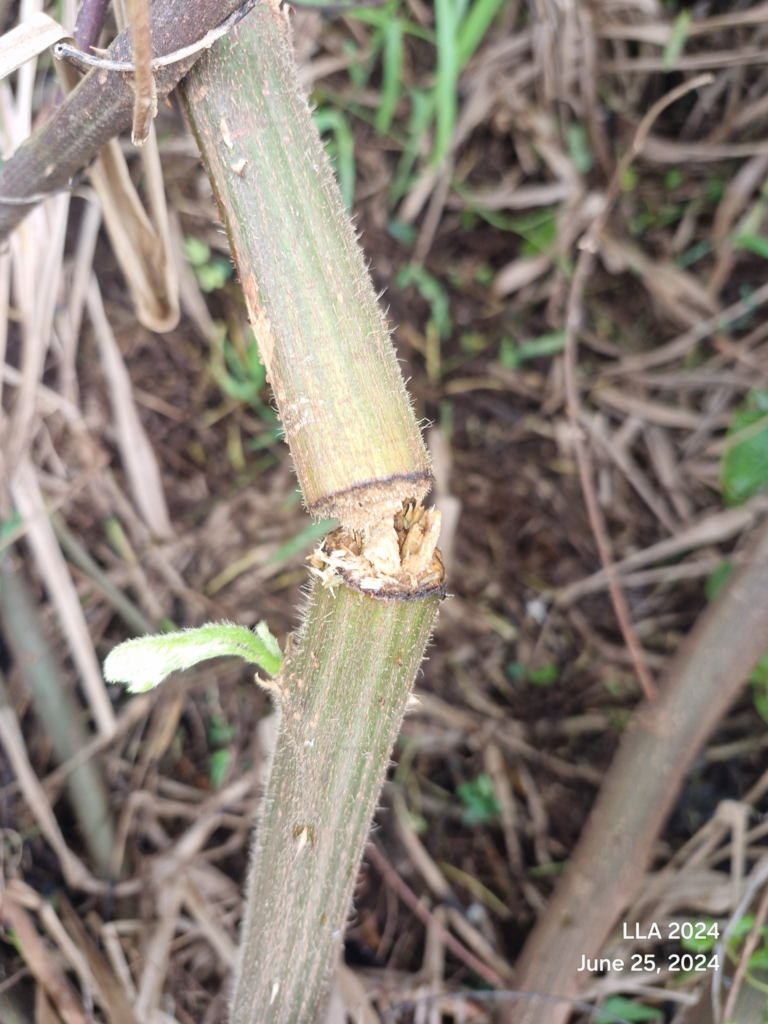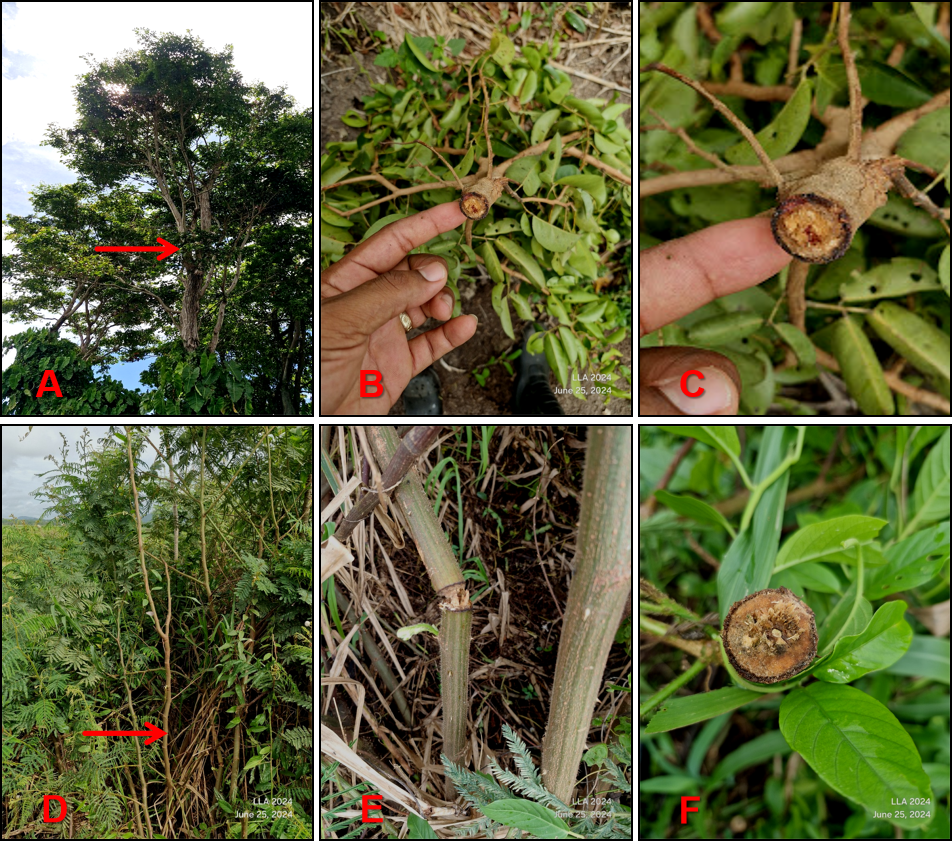
During June 2024 fieldwork in the Nariva Swamp Environmentally Sensitive Area (ESA)-Managed Resource Protected Area, I observed numerous Mimosa pigra (Fabaceae) stems exhibiting distinct, perpendicular cuts along and adjacent to the North Water channel. Initial assumptions of anthropogenic origin were dismissed upon closer inspection, as the cuts were inconsistent with tool marks. A subsequent finding of a fallen Dalbergia sp. (Fabaceae) branch with similar markings further confounded the observation. Extensive inquiries among local villagers, naturalists and entomologists yielded no conclusive explanations.
Several months later, general desktop searches suggested that the observed stem cuts bore a striking resemblance to those used by stem-nesting bees. While North American literature primarily highlights stem-nesting behaviour in temperate bee species, further investigations revealed no evidence that these bees actually cut the stems themselves. Instead, they appear to be opportunists, searching for already cut stems for laying eggs. I discovered that there are indeed several tropical stem-nesting bee species in Trinidad, suggesting the potential use of the cut branches or stems. However, the specific invertebrate taxa responsible for the initial stem-cutting activity remain unidentified.
Further investigation is warranted to determine what organism is responsible for these unique stem modifications and to assess the ecological implications within the Nariva Swamp ecosystem.

Stem cuttings created by possible invertebrates on two plant species, Kernahan, Nariva Swamp Environmentally Sensitive Area, West Indies.
(A) Habit (tree) of Dalbergia sp.—Fabaceae, indicating point of detachment. (approx. 6 m from ground).
(B) Fallen branch of Dalbergia sp. (approx. 1 m in length).
(C) Close-up of cut Dalbergia sp. branch detailing the characteristic markings.
(D) Habit (Shrub) of Mimosa pigra—Fabaceae.
(E) One of the numerous cut stems of M. pigra (approx. 0.25 m to 1 m from ground).
(F) Close-up of cut Mimosa pigra stem detailing the characteristic markings.